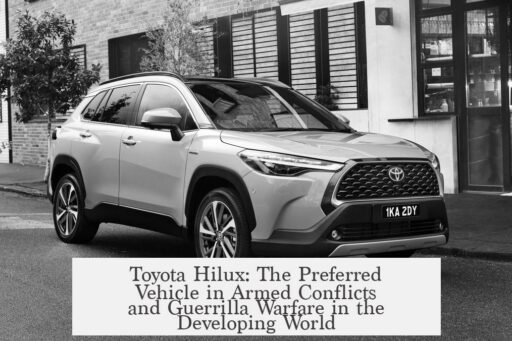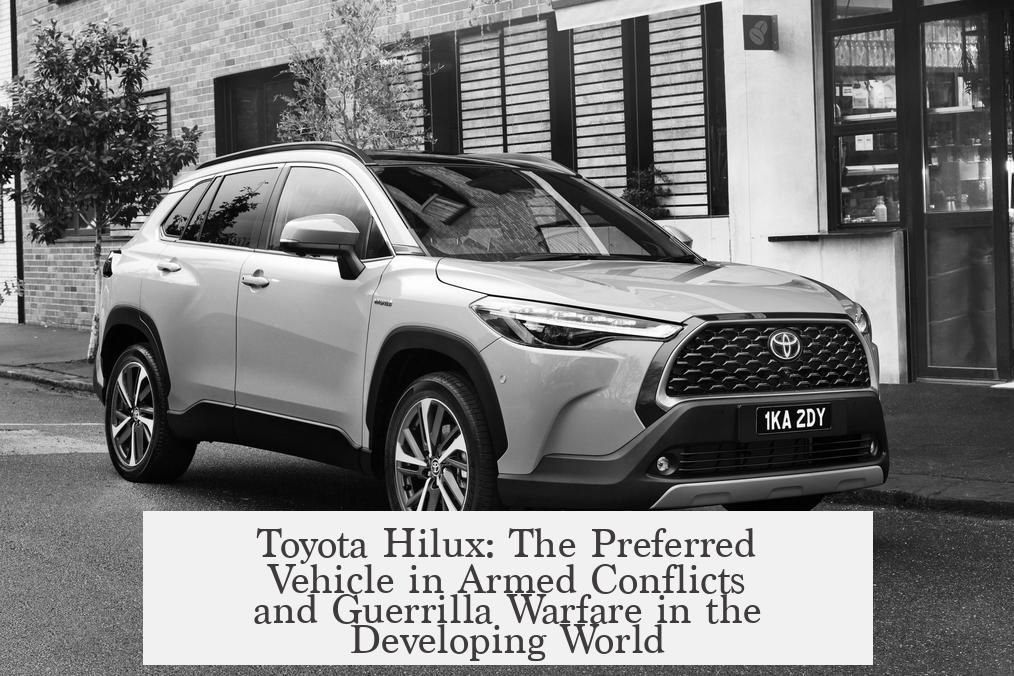The Toyota Hilux became the “vehicle of choice” for armed conflicts and guerrilla warfare in the developing world over the last 40-50 years due to its deep military heritage, unmatched reliability, ease of militarization, affordability, and proven battlefield success. This combination made the Hilux a versatile and accessible platform for low-budget armies and insurgent forces.
The story begins with Toyota’s experience in military vehicle production. During the Korean War, the U.S. contracted Toyota to build Willys Jeep units. Toyota’s background in producing the AK10, a reverse-engineered WWII military vehicle, gave it significant experience in building rugged, simple off-road vehicles. This foundation continued with the Toyota Land Cruiser, originally designed as a military vehicle, whose civilian versions retained robust potential for militarization.
By the 1970s and 1980s, the Hilux had emerged as a reputable vehicle, known especially for its mechanical simplicity and reliability under extreme conditions. A 1980s Hilux had a reputation akin to the “AK-47 of trucks,” able to endure harsh terrain and abuse. Popular media, such as the 2006 episode of Top Gear, famously demonstrated a 1988 Hilux surviving punishing durability tests. This ruggedness was critical for challenging roads in Africa, the Middle East, and other developing regions where infrastructure was poor and conditions severe.
Many competing off-road vehicles, such as Land Rovers, suffered from quality control problems—particularly in the late 1970s and 1980s—causing militaries to prefer Toyota trucks. The Hilux offered easier maintenance, reliable parts availability, and adaptability, which were essential in conflict zones where logistical support was limited.
What sets the Hilux apart is how easily it converts to a “technical.” These are civilian trucks equipped with mounted weaponry such as heavy machine guns, anti-aircraft systems, or anti-tank missiles. Toyota trucks are designed with sturdy flatbeds and simple chassis, enabling troops or militias to install weapons with minimal modification and without compromising vehicle reliability.
- The Hilux accommodates a wide range of weaponry—.50 cal machine guns, grenade launchers, anti-tank and anti-aircraft systems.
- Its mechanical robustness means the added weight and recoil forces do not significantly degrade performance.
- Local engineers prefer the Hilux because its parts are widely available, affordable, and easy to repair.
The combination of low cost, durability, and ease of conversion meant that militaries operating on limited budgets naturally gravitated to the Hilux. By the late 1970s, the Hilux was widespread in Africa and the Middle East, regions often afflicted by insurgencies and low-intensity conflicts.
The Toyota Hilux’s battlefield prominence became legendary during the “Toyota War” (1978-1987) in the Chadian-Libyan conflict. The Chadian forces rapidly mechanized their units by converting Hilux pickups into technicals equipped with Western anti-tank weapons. During the 1987 Battle of Fada, these light, fast-moving vehicles outmaneuvered heavier Soviet tanks. Libya lost nearly 100 tanks while Chad lost only three Toyotas.
Light and agile, the Hilux technicals could raid deep behind enemy lines before tanks or reinforcements could respond. In open desert warfare without enemy air support, trucks like the Hilux offered tactical advantages that traditional armored vehicles could not match at similar costs. This battle redefined regional military doctrine, promoting technicals as a core strategy in desert and irregular warfare.
Toyota as a company does not support the military use of these vehicles. It does not sell directly to armies and has publicly expressed discomfort with the Hilux’s role in conflicts. However, Toyota cannot control the secondhand market. The wide civilian sales, global parts network, and the vehicle’s intrinsic durability cemented its widespread adoption by armed groups.
In summary:
- Toyota’s early military vehicle experience laid a reliable mechanical foundation.
- The Hilux gained a reputation for unmatched durability and performance in harsh terrains.
- Simple design enabled easy conversion into weaponized technicals equipped with heavy arms.
- Affordability and availability in developing regions ensured it was accessible to low-budget forces.
- Its decisive role in the Toyota War demonstrated tactical superiority in desert combat.
- Toyota’s corporate policies do not endorse military use but cannot limit civilian sales fueling such use.




